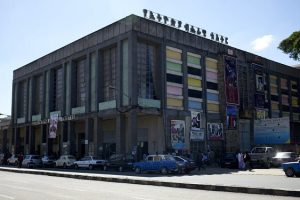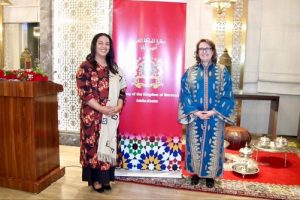BY MULUGETA GUDETA
The late Ethiopian writer and translator Mammo Wudeneh once said at a conference on translating foreign books into Amharic, that the important point was to have a good command of the language into which any work-fiction or non-fiction- was translated rather than the original works in which the book was written. According to his claim, having a good command of Amharic was more important than having a good knowledge of English or any other foreign language from which the book might be translated. In other words, since Mr. Mammo had a good command of Amharic, it was not so important for him to have an equally good command of English.
Whether he was right or not in his opinion about translation, Ato Mammo had established himself as a major author and translator of foreign works, mainly detectives, from English into Amharic. His books both the original and translated ones were very popular among his fans and the reading public in general. His detective works involving the operations of Israeli intelligence organization known as Mossad against terrorists and rival spy agencies were particularly celebrated and devoured with gusto.
Works Like “The Odessa Files” or “Our man in Cairo” ranked among the most favorites of his translations. These were not obviously first rate literary works and the reading public did not mind much as long as it could grasp the basic plot points and the unfolding of the narrative that was mind gripping like and works of that genre.
Mr. Mammo Wudeneh’s translated works were commendable because they required a lot of efforts and commitment as well as discipline to start and finish. He may also be considered as the first major Ethiopian translator of detective works into Amharic. For these and other reasons, he deserve commanding and should rank among the Ethiopian authors who introduced translated books to the reading public that enjoyed his efforts as entertainment or deserving more serious consideration depending on the nature of the stories and their appeal.
Many translated works have appeared before and after Mr. Wudeneh has left the literary scene. A new generation of book translators have appeared and gone into decline leaving the scene to yet new translators who followed their own rules or adhered to the principles of translation to give the public. Contrary to Mammo Wudeneh’s claims, experts in literary translation have put in place the basic principles a translator should follow when doing their job. According to one approach, “translators should be proficient in both the source and target language; avoid translating “word for word”; use common, everyday language; produce the target text in an eloquent and harmonious style.”
In the example we saw above, Mr. Mammo’s claimed that it was not important to know both source and target languages equally well. The above example on the contrary maintains that “a translator should be proficient in both the source and target languages”. Who is right? It is better to leave the judgment to readers or experts in translation. According to a related opinion, “A good translator should first and foremost read through the original text carefully. Doing so multiple times will then render you able to avoid on coming errors.”
Yet another view maintains that translation is a work of art. Who said that translation is an art? A man called Miremadi writes that, “whether translation is considered an art or a science, it is, in its modern sense, a by-product of a long history of trials and errors, developments, improvements and innovations.”
Jiri levy’s book entitled The Art of Translation is considered by many critics as and authoritative work on the subject, translation. “Although focused on literary translation from theoretical, descriptive and historical perspectives, it presents a conceptualization of a general theory, addressing a number of issues discussed today. The practical mission of the book as a theory extending to practice is based on the same historical-dialectic affinity of methods, norms, functions and values, accounting for the translator s agency and other contextual agents involved in the communication process. The book will be useful to translators, researchers, students and teachers in Translation and Literary Studies.”
To sum up our brief excursion on the subject of translation we can conclude by outline some of the most important points any aspiring translator should consider before embarking on such an arduous even if not lucrative job. To begin with, there are four kinds of translations: Literary translation, professional translation, Technical and administrative translation.”
There are at last ten rules of translation as indicated above. These are, a)The translation should be brief b)You have to use proper grammatical formats c) You need to stick to the gist of the content d)Go for proper meaning instead of a word-to-word translation. …e) Clarity of certain dates and places, f) Use a more active voice, g) Avoid humor) the translation should be accurate h) Try to connect with the audience through the translation i) Give priority to quality of translation over quantity.
As far as the objectives of a good translation are concerned, researchers suggest that “Translation enables people all over the world to communicate effectively. It is a knowledge courier, a guardian of cultural heritage, and essential to developing a global economy. Through translation, you can ensure that all of your information and data are conveyed in the same way as the original documents’ essence. There will be no linguistic errors, and everything will be accurately conveyed.”
Nowadays, there are many methods of translation including what experts call electronic or digital translation that makes use of computer program specifically designed for doing translation from one language to another. The problem with digital translation is that it is mainly focusing on the technical or programmed aspect of the work while overlooking the human elements that are outlined above as elaborated by experts.
You cannot obviously tell a computer translator program to have the above rules on mind while doing its job. Most of the vital characteristics of a good translation emanate from the human action, evaluation and rules. Nowadays, there is a phenomenon known as “content translation” which means as content translation means “converting your content to a new audience in another language via translators and interpreters is referred to as content translation.”
The times when the late Mammo Wudeneh and his like-minded colleagues involved in translation works may be different to the present time when either as an art or a science, translation has become an independent activity unto itself and a lucrative business that is conducted by highly popular publishing houses. Some translators have achieved great respect and status through the quality of their translation works. We can perhaps consider the case Gregory Rabassa, the leading translator of the major fictional works of Nobel Laureate Garcia Marquez, including “One Hundred Years of Solitude”. The author Marquez once made a sarcastic remark about his translator by saying that, Rabassa was the best “Latin American writer in English.”
Russian émigré writer Vladimir Nabokov once said about translations and translators that. He was the English translator of Pushkin, among others:
“Three grades of evil can be discerned in the queer world of verbal transmigration. The first, and lesser one, comprises obvious errors due to ignorance or misguided knowledge. This is mere human frailty and thus excusable. The next step to Hell is taken by the translator who intentionally skips words or passages that he does not bother to understand or that might seem obscure or obscene to vaguely imagined readers; he accepts the blank look that his dictionary gives him without any qualms; or subjects scholarship to primness: he is as ready to know less than the author as he is to think he knows better. The third, and worst, degree of turpitude is reached when a masterpiece is patted into such a shape, vilely beautified in such a fashion as to conform to the notions and prejudices of a given public. This is a crime, to be punished by the stocks as plagiarists were in the old days.”
There are many people involved in the arduous work of book translation in this country. Most of them are translating historical, psychological or medical works without being historians, psychologists or medical professionals. This tendency put more pressure on these people because they have to put additional efforts of having a good grasp of history, psychology, medicine on any other field of knowledge.
Literary translators are, on the other hand, in a better position because they have the advantage of translation literature on the basis of their personal knowledge, preference or love of a given foreign author. Here too they should do better listening to the comment by Nabokov who said in the above quote that, The next step to Hell is taken by the translator who intentionally skips words or passages that he does not bother to understand or that might seem obscure or obscene to vaguely imagined readers… he is as ready to know less than the author as he is to think he knows better.”
The Ethiopian Herald 27 August 2022





